98%
Clients Satisfied
our Services

Our experienced spine consultants employ state-of-the-art diagnostic tools to precisely identify the root cause of your spinal concerns.
Our comprehensive range of intervention options spans from minimally invasive procedures to advanced surgical techniques.
You are more than just a patient – you are a partner in your health journey. Our team is committed to providing personalized care plans..


Years medical training
has acquired him a certificate
from American Board of Pain Medicine.
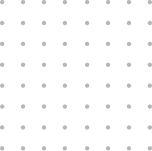
Dr. Hodroj is skilled in all sorts of pain management such as:

Clients Satisfied
our Services
Dr. Hodroj addresses your pain wisely through different courses of treatment as needed: * medications and injections that numb the pain * advanced procedures such as radiofrequency ablation (RFA) or visco-supplementation * implant with a pain pump or a spinal cord stimulator Each patient receives the best treatment course and all the support needed though his treatment journey.


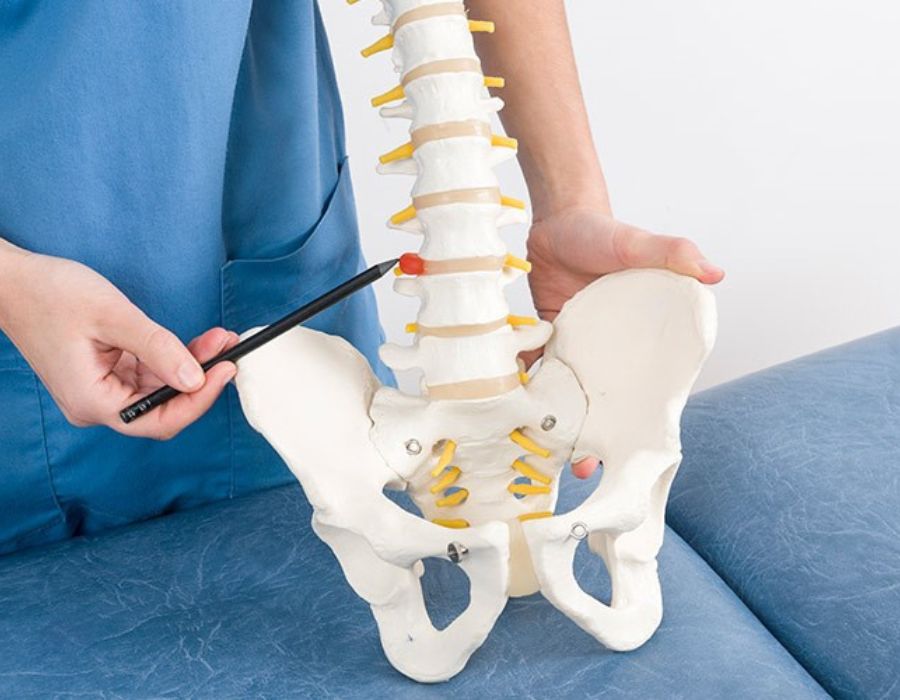
A bulging disc is a common, age-related spine injury. The spine is made up of stacked vertebrae with spinal discs sitting between each one. The tough discs provide cushioning, support, and shock absorption and movement to the vertebrae. Each disc is made up of an outer ring (annulus fibrosus) and inner, jelly-like core (nucleus pulposus). Bulging Disc occurs when the nucleus shifts to press against the disc's outer ring, causing the disc to flatten and protrude into the spinal canal. Age-related wear and tear on the spine are the most common cause of a bulging disc. A traumatic accident like a car crash or sports accident can also damage spinal discs.
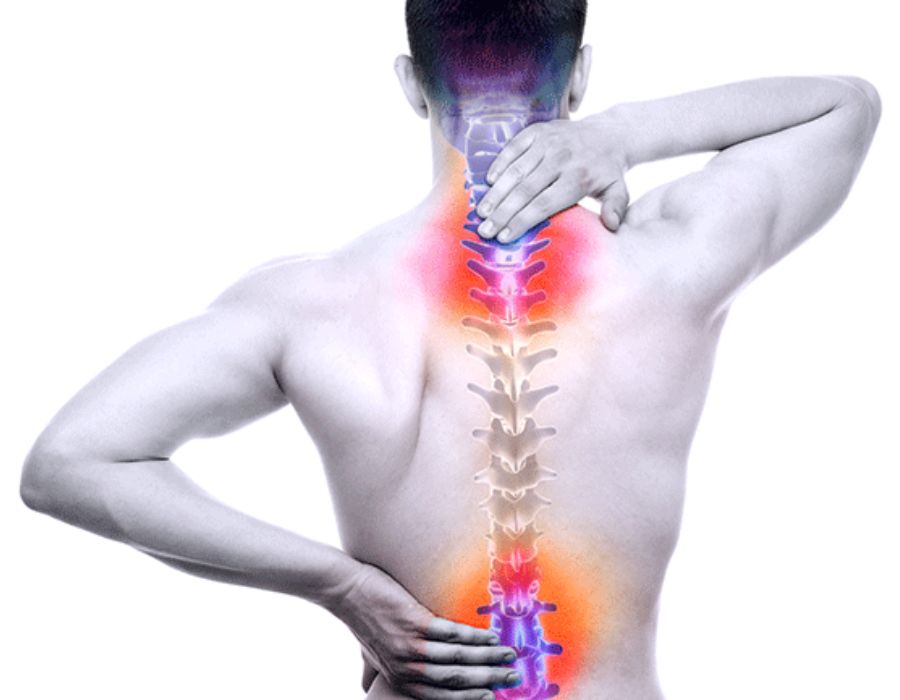
Degenerative disk disease is when normal changes that take place in the disks of your spine cause pain. Spinal disks are like shock absorbers between the vertebrae, or bones, of your spine. They help your back stay flexible, so you can bend and twist. As you get older, they can show signs of wear and tear. They begin to break down and may not work as well.
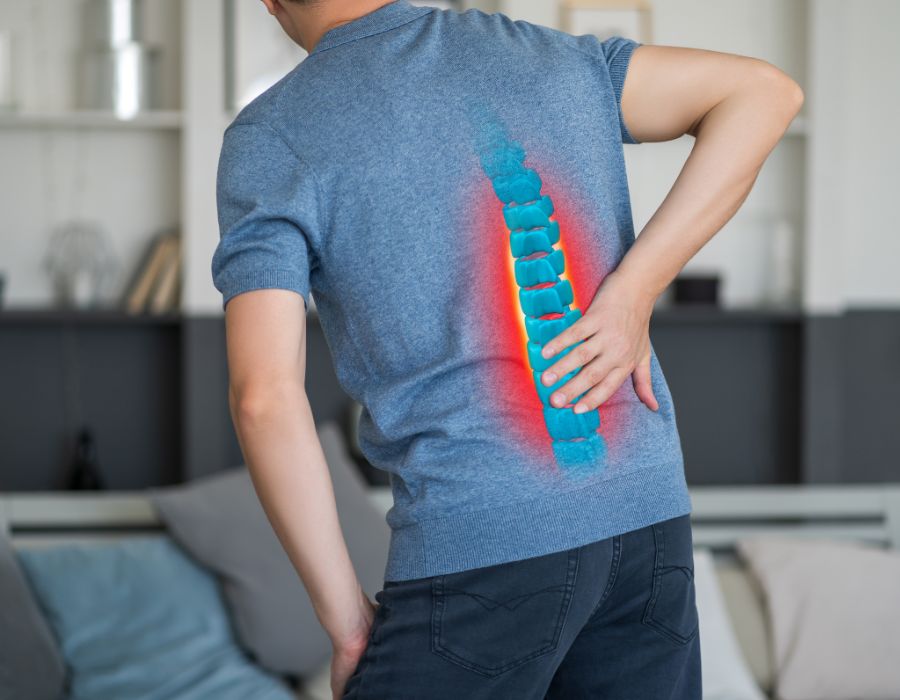
A disc tear usually happens when there is a combination of disc degeneration and trauma to a vertebral disc. When a disc tear occurs, the inner disc material pushes into the tear creating a form of disc herniation. Occasionally the material will pass completely through the outer layer of the vertebral disc leading to a full disc herniation. Because a disc tear usually requires some form of trauma they are most commonly found in the neck or lower back. This is not to say that they could not be found anywhere in along the spine, just that it would be very rare.

Facet joint syndrome is an arthritis-like condition of the spine that can be a significant source of back and neck pain. It is caused by degenerative changes to the joints between the spine bones. The cartilage inside the facet joint can break down and become inflamed, triggering pain signals in nearby nerve endings.

A herniated disc is a fragment of the disc nucleus that is pushed out of the annulus, into the spinal canal through a tear or rupture in the annulus. Discs that become herniated usually are in an early stage of degeneration. The spinal canal has limited space, which is inadequate for the spinal nerve and the displaced herniated disc fragment. Due to this displacement, the disc presses on spinal nerves, often producing pain, which may be severe.

The low back, also called the lumbar region, is the area of the back that starts below the ribcage. Almost everyone has low back pain at some point in life. It’s one of the top causes of missed work in the U.S.

A pinched nerve occurs when too much pressure is applied to a nerve by surrounding tissues, such as bones, cartilage, muscles or tendons. This pressure can cause pain, tingling, numbness or weakness.
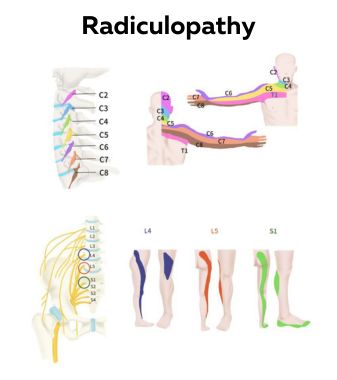
Cervical radiculopathy is the clinical description of when a nerve root in the cervical spine becomes inflamed or damaged, resulting in a change in neurological function. Neurological deficits, such as numbness, altered reflexes, or weakness, may radiate anywhere from the neck into the shoulder, arm, hand, or fingers. Pins-and-needles tingling and/or pain, which can range from achy to shock-like or burning, may also radiate down into the arm and/or hand.

Sacroiliitis is an inflammation of one or both of your sacroiliac joints — situated where your lower spine and pelvis connect. Sacroiliitis is a common source of lower back pain or pain in the buttocks or thighs. It is often difficult to diagnose since many other conditions cause pain in the same locations.
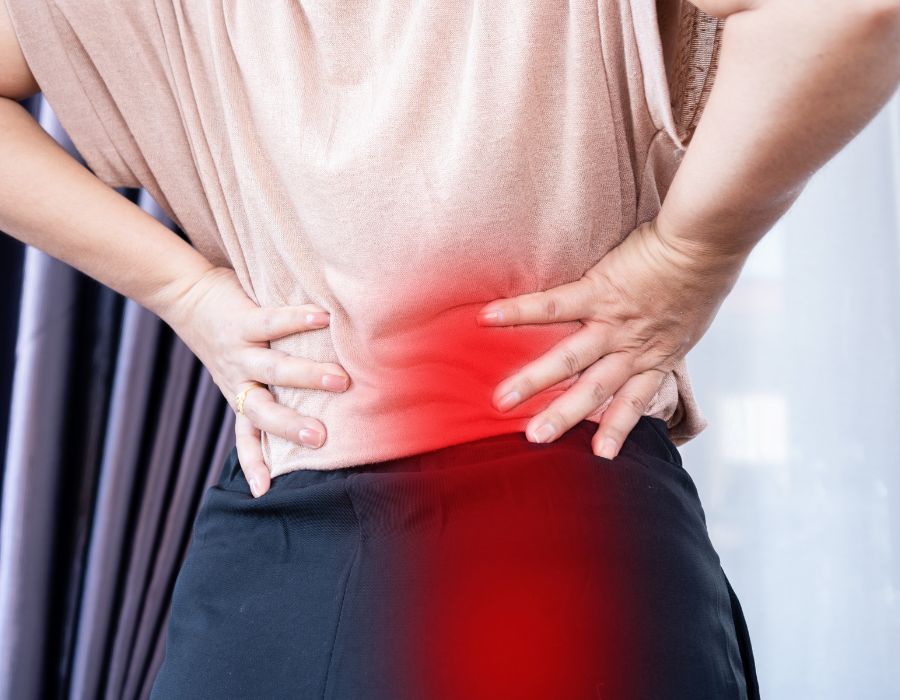
Sciatica pain is caused by an irritation, inflammation, pinching or compression of a nerve in the lower back. The most common cause is a herniated or slipped disk that causes pressure on the nerve root. Most people with sciatica get better on their own with time and self-care treatments.
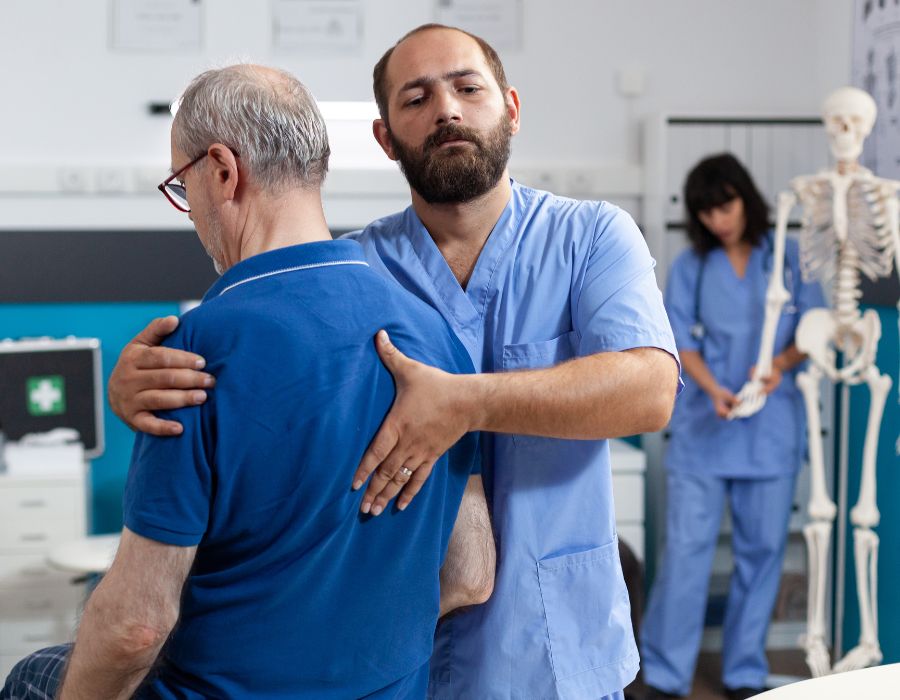
Spinal bone spurs often form as a result of chronic inflammation, which can develop within areas where cartilage has worn away due to spinal arthritis. This condition breaks down the cartilage that cushions the ends of bone. As your body attempts to repair this loss, it can create bone spurs near the damaged area.

Spinal stenosis is a narrowing of the spaces within your spine, which can put pressure on the nerves that travel through the spine. Spinal stenosis occurs most often in the lower back and the neck. Some people with spinal stenosis may not have symptoms.

Offering relief for spinal pain and inflammation, epidural injections involve delivering medication into the outer layer of the spinal cord. Commonly used to address conditions like herniated disks and spinal stenosis, this procedure is part of a comprehensive pain management approach at Comprehensive Spine and Joints.

Utilizing a patient’s blood cells to create a concentrated solution rich in growth factors, PRP injections accelerate healing in targeted areas, addressing conditions from sports injuries to hair loss. Notable for their versatility, PRP injections support the healing of chronic tendon injuries and other musculoskeletal conditions.


